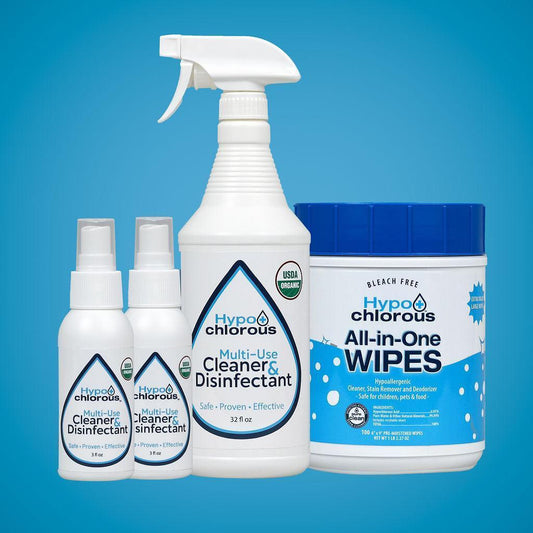The Hidden Threat on Your Plate
Fall is a season of abundance. In North America and Northern Europe, it's when farms and markets overflow with apples, squash, leafy greens, and vibrant berries. It’s a time for gratitude—symbolized by Thanksgiving—but there’s a less visible guest at your dinner table: pesticides.
Modern agriculture relies heavily on pesticides to produce perfect-looking fruits and vegetables at scale. While these chemicals help crops grow, many remain on the food we bring into our homes.
How Much Pesticide Are We Eating?
You may be surprised by how common pesticide residue is:
- The U.S. Food & Drug Administration found pesticide traces on 84% of domestic fruits and 53% of vegetables.
- The Environmental Working Group reports that over 70% of non-organic fresh produce in the U.S. contains detectable pesticide residues.
- A Consumer Reports study found that 20% of 59 common fruits and vegetables contained pesticide levels considered a “significant risk.”
- Health Risks of Pesticide Exposure
The dangers of pesticide exposure depend on the type of chemical, amount, and how often we’re exposed. Health concerns range from short-term reactions to long-term chronic illnesses:
- Acute effects: nausea, dizziness, skin irritation.
- Chronic effects: hormonal disruption, neurological damage, reduced fertility, or increased cancer risk.
- Child development risks: studies link pesticide exposure to developmental delays and behavioral issues.
- Gut health: research suggests pesticides can alter gut microbiota, impacting digestion and immune function.
Who Is Most at Risk?
Some people are more vulnerable to these chemical residues:
- Children
- Pregnant and breastfeeding women
- Individuals with weakened immune systems
Which Foods Have the Most Pesticides?
Certain produce absorbs or retains more pesticides than others. These include:
- Leafy greens (lettuce, spinach, kale)
- Berries (strawberries, blueberries)
- Tree fruits (apples, peaches, pears)
Organic produce generally has fewer synthetic pesticides, but even organic crops can carry residues from soil, air, or neighboring farms.
The Irony of Healthy Eating
We choose fruits and vegetables to nourish our bodies. Yet without addressing pesticide residue, “eating healthy” could unintentionally mean consuming more harmful chemicals. Fortunately, nature offers a simple solution.
Mother Nature’s Answer: Hypochlorous Acid
Your immune system already uses a powerful molecule called hypochlorous acid, created naturally by white blood cells (neutrophils) to defend against bacteria and viruses.
Scientists have found that this same natural compound can also break down toxic pesticide chemicals on produce. Here’s how it works:
- Hypochlorous acid oxidizes pesticide molecules, breaking them apart into harmless components.
- During this process, hypochlorous acid converts back into salt and water—completely safe and natural.
- It’s stronger than chlorine or bleach at neutralizing toxins, yet gentle enough to be found in your tears and skin.
- The solution is EPA and FDA approved for sanitizing food and water.
Today, hypochlorous acid can be made with just salt, water, and electricity—and it’s available to consumers, even in USDA Certified Organic form.
How to Reduce or Eliminate Pesticides from Produce
Follow these simple steps:
-
Buy Organic When Possible
A helpful first step—but still not enough on its own. -
Wash and Spray with Hypochlorous Acid
- Rinse produce with water.
- Spray or soak fruits and vegetables in USDA Certified Organic hypochlorous solution.
- Let it sit for a few minutes.
- This step reduces pesticides and eliminates bacteria, mold, and viruses.
- Peel or Trim When Practical
Removing outer layers further reduces residue.
Where to Get USDA Organic Hypochlorous Acid
The only hypochlorous solution certified USDA Organic is available from The Hypochlorous Company at tryhpo.com.
We recommend the Multi-Use Cleaner & Disinfectant, available in a 32 oz spray bottle or 1-gallon refill.
Use the code StopPesticide for 10% off your purchase.




